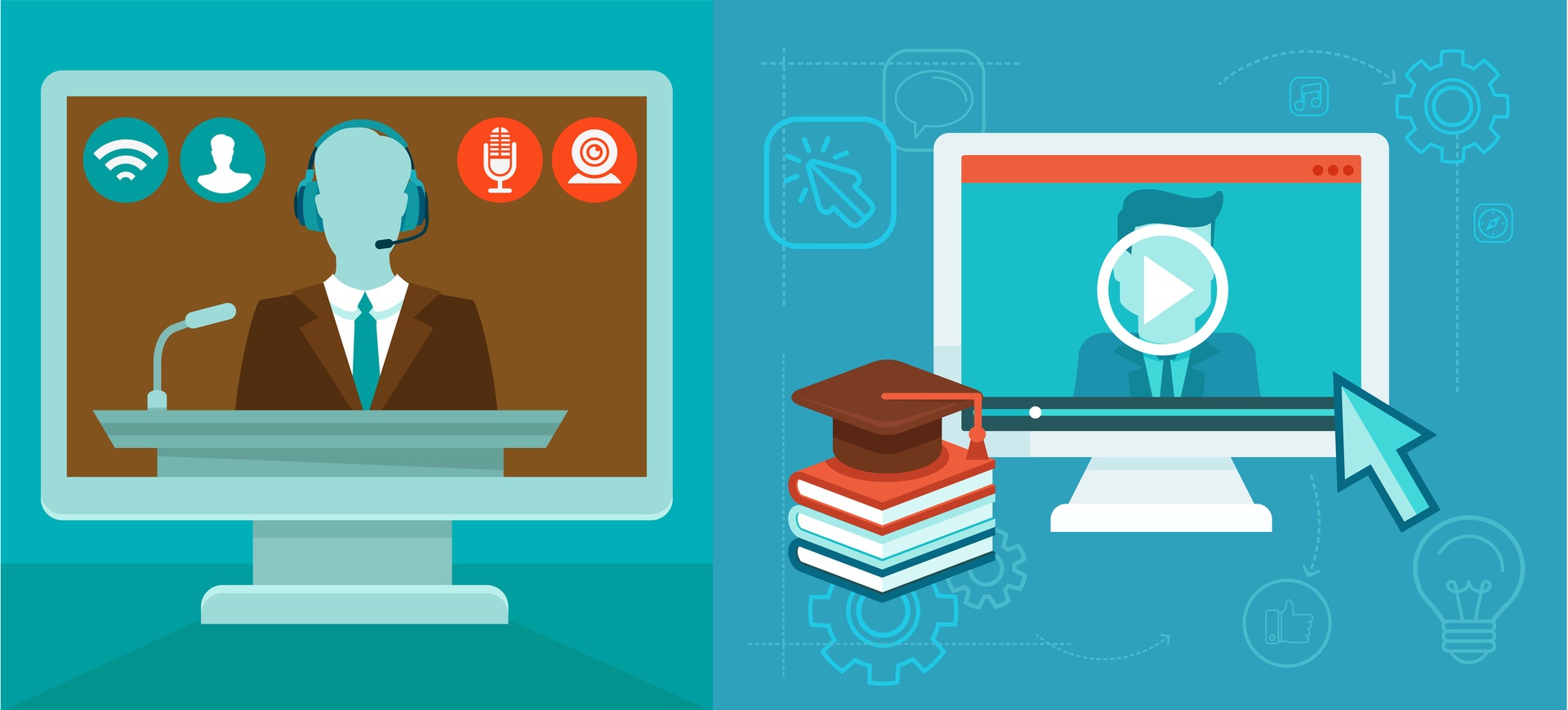Synchronous vs Asynchronous Learning: How To Integrate Them Into Your eLearning Course Design
Synchronous learning happens in real time. The learners typically log on to an eLearning platform, such as a web conferencing or webinar tool, and engage with the instructor and peers. This can even come in the form of an online chat room where learners gather at a specific time and date to broaden their understanding of the topic. It is an ideal option for distracted or unmotivated learners who need a more collaborative online experience, as well as self-guided learners who require a higher level of support or direction.
This is the exact opposite of asynchronous learning, which can occur at any time. Learners are able to complete modules whenever they like, regardless of whether other members of the online class are logged on. They are given the tools and information they need, but must decide when and how they will use these online resources to achieve their learning goals. With that being said, there are usually deadlines and schedules that a learner must follow. For example, they may have to turn in their online assignments by the end of each month or have to participate in at least one online discussion per week. Asynchronous learning courses often have a common space where learners can post questions, turn in online assignments, or engage in eLearning activities.
4 Tips For Designing A Successful Asynchronous Learning Strategy
- Variety is key.
Integrating a wide range of online activities and exercises not only avoids dreaded learner boredom, but it also caters to a broad range of learning preferences and styles. For example, offering a text-only online course might exclude learners who prefer to learn via eLearning videos and simulations. This is why it’s essential to include a good mix of learning materials into your asynchronous learning strategy. Bear in mind that self-guided learners are more likely to disengage from the eLearning experience if the online course fails to grab and hold their interest. - Develop a solid support structure.
One of the downfalls of asynchronous learning is that it lacks face-to-face instruction. As such, you must have a solid support system in place to assist those who need additional help with the subject matter, or even the learning management system. If they encounter a glitch or cannot log in to the eLearning platform, they should always have a way to get in touch with someone who can offer assistance. - Create a collaborative online community.
Self-guided learners who are participating in asynchronous learning experiences run the risk of feeling isolated. They are not engaging in real-time discussions on a regular basis. Thus, they are not able to collaborate with their peers and benefit from their experience as often. To alleviate this, consider building an online community, such as a forum or blog, where learners can meet and share their ideas, concerns, and questions. You might even want to think about developing online exercises that require learners to team up, via web-based project management platforms, to complete the online assignment or solve a common challenge. - Make it easily digestible.
Your asynchronous learners are probably going to be accessing learning materials on-the-go. Therefore, you need to make the modules bite-sized, so that they can get the info they need as quickly as possible. This also gives them the ability to pause once they’ve completed a module and then pick up where they left off at a later time. Digestible learning materials help to avoid cognitive overload, as well, which is always a plus. Be sure to include a course map that allows learners to track their progress and quickly view which module is up next.
3 Tips For Designing A Successful Synchronous Learning Strategy
- Set the tone.
The key to an effective synchronous learning course is creating the ideal learning environment. Since your learners are going to be participating in a real time discussion or online presentation, you need to have their full attention; this means removing all distractions from the room when they are accessing the eLearning course, and setting aside enough time in their schedule to sit in for the entire online discussion. Make them aware of the expectations well in advance so that they know how to prepare for the event. - Don’t overload learners with text.
Only include text for the key takeaways of the online presentation. Don’t overload their mental processes by writing out your eLearning script word for word on the screen, or giving them text passages for each story that you share. The only exception to this rule is, of course, when you have hearing impaired learners in your audience. If this is the case, then you may want to consider adding optional subtitles that can be turned on or off during the event. - Create a flexible schedule.
Unlike asynchronous learning, synchronous learning courses typically stick to a schedule. However, this doesn’t mean that learners should have to put their lives on hold in order to participate in a virtual discussion. Try to make the schedule as flexible as possible, and record your online events so that absent learners can still get the information they need at a later time. Before you begin the eLearning course, conduct a survey to figure out the best days and times for your learners, so that you can create a schedule that works for them. Also, keep their busy personal and professional lives in mind when creating the deadlines for online assignments and eLearning assessments.
To determine which approach is right for your learning goals and objectives, as well as your audience, conduct surveys, focus groups, and needs evaluation analysis before you begin developing your curriculum. If you’re still on the fence about whether an asynchronous or synchronous strategy is ideal for your learners, you may want to think about utilizing a blended learning approach that offers the best of both worlds.
Looking for an affordable way to reach out to online learners and boost peer-to-peer collaboration? Read the article 6 Tips To Use Google Hangouts For Synchronous Learning to discover how you can use FREE Google Hangouts in your synchronous learning strategy.







